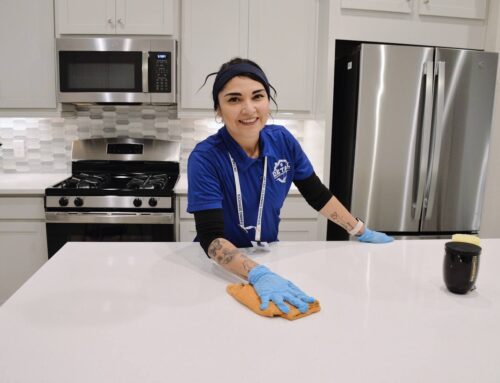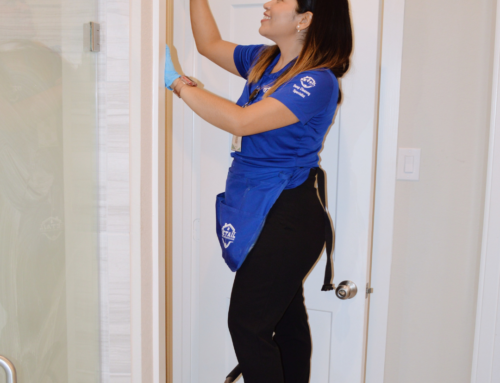A recent global study discovered that household air pollution was the cause of approximately 3.2 million deaths. Of this figure, over 237,000 of these deaths were of children under the age of 5.
It’s no secret that keeping your home clean not only improves aesthetics and mental well-being, but importantly, it can boost the air quality at home and improve the health of your and your family.
Many people are asymptomatic or think they are. However, poor-quality air can be the root cause of numerous ailments. In the long run, these can lead to cancer and respiratory diseases.
There are some simple things you can do now to improve your home environment. Read on to find out more.
What Does Poor Indoor Air Quality Mean?
According to the British Lung Foundation, poor-quality air refers to dust, dirt, or gases in the air inside a building that harms us if we breathe it in. Typically, homes in cities have lower-quality indoor air compared to homes in the countryside.
They are caused by a range of things. This can include poor ventilation and damp areas which can cause mold to grow, through to chemicals found in cleaning products.
If you’ve freshly decorated a room, this can also be from paints. Another cause of poor air quality is human and animal skin cells and hair or fur or fibers from clothing and soft furnishing.
These all add up to tiny particles. Often, they can not be seen or smelled. They can all take their toll on air quality.
Tips to Improve Air Quality at Home
If you’re someone who suffers from problems such as headaches, inflamed or irritated ears, nose, and throat, or gets bouts of dizziness and poor sleep, poor quality air could be the cause. Try these tips around your home and feel the benefits.
Open the Windows
One of the simplest things you can do to improve air quality at home that does not involve doing any cleaning is to open the windows. Increasing airflow and bringing in fresh, clean outdoor air is the easiest and cheapest way to improve the air quality in your home.
Although this might feel counterintuitive during the winter, when you’re trying to keep warm, a quick blast of fresh air in your home is a great way to reduce the humidity indoors that dust mites, one of the main causes of respiratory issues, need to survive.
Remove Dust From Surfaces Regularly
Vacuum cleaners as well as traditional dusters are great tools in helping to eliminate dust from surfaces. Don’t just stop at the countertops, shelves, and floors. Use the various attachments of your vacuum cleaner to get the dust out from under sofas, beds as well as curtains.
You might want to take thick rugs and cushions outside and bash them against a wall to remove any dust that is being held in the.
Wash Bedding Regularly
You could be sleeping on a mound of irritants if you’re not changing your bed sheets regularly. Ideally, these should be done weekly. When washing, set the temperature to at least 60 degrees to kill dust mites and any other germs that are living in them.
Keep Surfaces Clutter Free
Having sparsely decorated surfaces, or putting things away in cupboards and boxes can help keep your home cleaner. Having clutter-free surfaces not only provides fewer places for dust to land, but it also makes the task of dusting and cleaning much quicker.
Check Your Cleaning Cupboard
Your cleaning efforts could be counterproductive if the products you are using are toxic. Go through your cleaning cupboard and check if they are safe to breathe in.
From an ecological perspective, some are also harmful to the environment. For example, pouring bleach down drains can pollute waterways.
Switch to eco-friendly and nontoxic options. You could even make your own from natural ingredients like lemon, vinegar, and bicarbonate of soda. If you don’t have the time to make your own, then look for products that are certified as allergy-free.
Reduce Dampness
Damp areas, typically kitchens and bathrooms, are a haven for mold. We’ve already mentioned opening windows, but there are other things you can do to help keep your home mold free and improve the quality of air.
You could install extractor fans in humid rooms, or invest in a dehumidifier that draws water out of the air. Even a regular room or ceiling fan can help to circulate the air.
Check Your Air Ducts
It’s a good habit to get into to check any ducting and vents. This also includes filters on aircon units.
Clean air ducts are essential for improving the air quality inside your home. From the outside, this may look like a visible dust build-up stuck on a filter. There may also be dust blockages inside if the filter is broken.
A lot of these filters and air ducts can be cleaned, often by removing and replacing, or cleaning the filter before putting it back on. If you have, for example, a complex air conditioning system, you may want to hire a technician to do this task.
Hire a Professional Cleaning Service
There are numerous benefits of a cleaning service. The main one is that it saves you time. If you’re juggling a full-time job, family commitments and general life admin, deep cleaning your home is probably the last thing you want to be spending your precious time off doing.
A house cleaning service can be booked to come to your home on a weekly, bi-weekly, or monthly basis and will keep you on top of the overall cleanliness of your home. Alternatively, if you want to hire a professional to do a deep cleaning of your home, then you could use a seasonal or one-time visit.
How Clean Is Your Home?
How many of these ideas are you going to try? If you strive to improve your air quality at home and boost the well-being of your family, then keeping your home clean will play a major part in that.
If you’re not sure where to start, then speak to our team today to discuss your needs. Alternatively get a free online quote and find out straight away how affordable a cleaning service could be.





